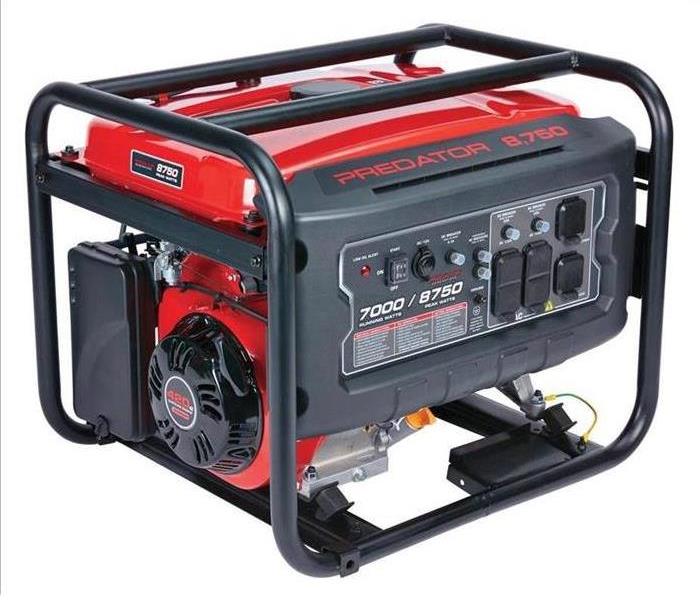Safe Use of Your Generator After a Storm
10/12/2021 (Permalink)
 Using your portable generator safely after a storm can literally save your life. Follow SERVPRO's tips to stay out of trouble.
Using your portable generator safely after a storm can literally save your life. Follow SERVPRO's tips to stay out of trouble.
Going through a big storm or natural disaster—whether it’s a hurricane, tropical storm, tornado, blizzard or ice storm—is hard enough. Then there’s the aftermath, which all too often includes extended power outages. Unfortunately, those outages can end up being fatal for people when they don’t follow safe use guidelines for generators.
Last summer, for example, Hurricane Laura hit the state of Louisiana as a category 4 storm, with winds of up to 150 miles per hour. The ensuing storm surge was 15 feet high. After that kind of fury, hundreds of thousands of people lost power, and a number of people died from carbon monoxide poisoning caused by unsafe generator usage.
More Death After the Storm
As The New York Times reported in August 2020, “The electrical outages have been deadly, as several people who turned to generators to power refrigerators, lights and air conditioners have been overcome with fumes.
“At least seven people have been killed by carbon monoxide from generators, including four members of a family found dead in a home in Lake Charles. A fifth member of that family was taken to a hospital. Their generator was in a garage and the deadly gas was able to seep into the house through a garage door that was left cracked open, [Lake Charles mayor Nic] Hunter said.
“Another man in Calcasieu Parish, which includes Lake Charles, died of carbon monoxide poisoning from a generator, as did an 84-year-old man and an 80-year-old woman in the same home in Allen Parish, to the northeast, said health officials, who warned people never to place generators in homes or in closed garages.”
Use Your Generator Safely
The danger from portable generators lies in their exhaust: they produce colorless, odorless and tasteless carbon monoxide gas (CO). The National Institutes of Health reports that it only takes five minutes for enough carbon monoxide to build up inside a garage or home to sicken or even kill people.
The symptoms of CO poisoning are dizziness, fatigue, headaches and nausea. If anyone in your home experiences this, everyone in the home should go outside ASAP. Call 911 and stay outside until fire or police have checked your house for carbon monoxide.
If you’re shopping for a new generator, look for one with an automatic shut-off sensor to prevent dangerous levels of CO from building up.
SERVPRO recommends that you follow these generator use guidelines.
- Never run your generator inside a garage, house or other enclosed space. Even a partially enclosed space can trap and concentrate CO, putting your health at risk.
- Set up your generator at least 20 feet from your house. Leave 3 to 4 feet of clear space on all sides and above your generator for ventilation. Point the engine exhaust away from windows and doors.
- Use a battery-operated carbon monoxide detector in your home whenever the generator is operating.
- If it’s raining, protect the generator under a tent or canopy to allow for ventilation.
We’re Here for You
The team at SERVPRO of West Hartford has specialized training and experience in natural disaster and storm damage cleanup, water damage remediation, fire restoration services and chemical cleanup. Call SERVPRO of West Hartford (860.206.6141) any time.
If your home or business suffers damage from a storm or other natural disaster, call SERVPRO of West Hartford today at 860.206.6141
Other Helpful Blog Posts
SERVPRO publishes educational articles on how you can protect your home and business from disasters and how to deal with mold, fire, water, sewage, storm and other damage.
SERVPRO of West Hartford
100 Peters Road, Bloomfield, CT 06002
IICRC Certified
Noemi DiCristofaro
Certified SERVPRO technicians
Call 860.206.6141
24-hour emergency service
If your home or business suffers damage from a storm or other natural disaster, call SERVPRO of West Hartford today at 860.206.6141






 24/7 Emergency Service
24/7 Emergency Service